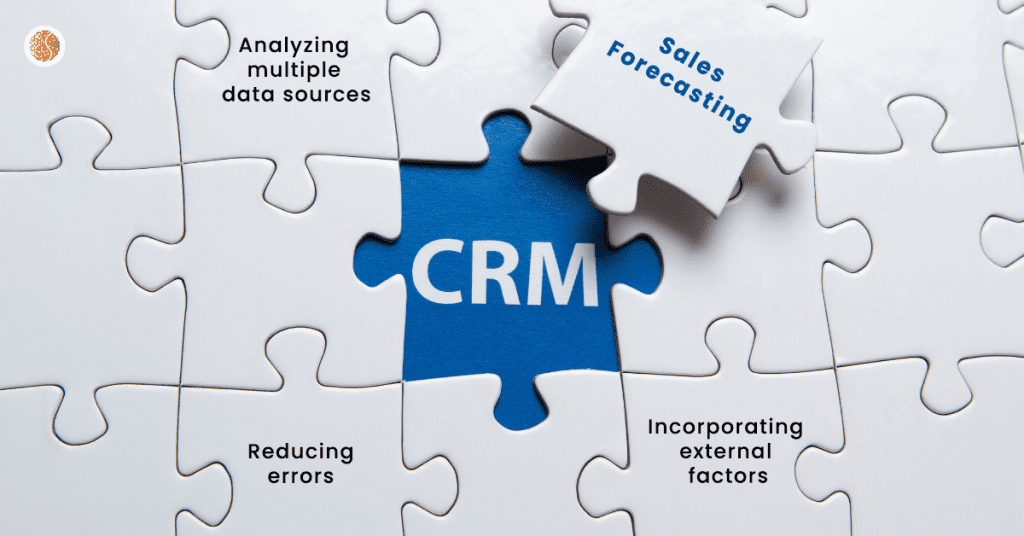Customer relationship management (CRM) software is essential for managing interactions with customers and prospects. Integrating artificial intelligence (AI) capabilities like predictive analytics can take CRM to the next level. AI predictive analytics utilizes machine learning algorithms to analyze data and identify patterns. This enables more accurate forecasts and segmentation than traditional analytics methods.
When leveraged effectively, AI predictive analytics provides significant benefits across sales, marketing, and customer service. Companies that capitalize on AI gain competitive advantage through hyper-personalization, optimized resource allocation, and improved performance. However, implementation requires thoughtful data integration and model development.
Table of Contents
The Power of AI Predictive Analytics in CRM
CRM systems contain a treasure trove of customer data. AI predictive analytics in CRM unlocks the value of this data through machine learning algorithms that detect subtle patterns and make predictions. When integrated into CRM systems, AI analytics can analyze customer data to generate insights that inform and optimize key functions.
According to IDC, worldwide revenues for big data and business analytics will grow from $189 billion in 2019 to over $274 billion by 2022, representing a compound annual growth rate of 13.2%.
Key capabilities enabled by AI predictive analytics in CRM include:
- Personalized recommendations
- Predictive lead scoring
- Churn analysis
- Next-best actions
- Sales and marketing optimizations
The massive growth in big data and analytics spending shows that companies recognize the tremendous value AI-driven insights can provide across CRM functions.
By leveraging massive amounts of customer data, AI predictive analytics in crm provides more accurate forecasts and segmentation than traditional analytics methods. This empowers brands to tailor engagement and personalize experiences for each customer or segment.
Overall, integrating AI predictive analytics into CRM systems allows companies to provide hyper-personalized experiences, optimize resource allocation, and improve performance across sales, marketing and customer service.
Benefits for Sales Forecasting

One major benefit of AI predictive analytics in CRM is more accurate sales forecasting and pipeline predictions. This is achieved in a few key ways:
- Analyzing multiple data sources – AI looks beyond just past sales data to factor in customer engagement metrics, firmographic data, market trends, and more. This results in a 360-degree view.
- Identifying patterns and trends – Machine learning algorithms can detect subtle patterns from customer data to uncover insights. This reveals trends human analysts may miss.
- Reducing errors – AI predictive analytics greatly reduces human errors and biases that creep into traditional manual forecasting. This leads to more precise predictions.
- Incorporating external factors – The algorithms can take into account economic factors, industry trends, market dynamics, and other external forces that impact sales.
According to McKinsey, AI-driven sales forecasting can improve forecasting accuracy by up to 50%. More accurate forecasts enable sales teams to optimize resource allocation and increase pipeline conversion rates.
Additionally, AI analytics provides visibility into customer buying signals earlier in the process by analyzing online behaviors. This includes monitoring website traffic, content downloads, profile visits, and email engagement. These signals help sales teams understand prospect interest levels and purchase intent sooner.
With more accurate forecasts powered by AI, sales leaders can make data-driven decisions on where to focus efforts. Sales reps can follow up with the right leads at the right time to convert more pipeline into closed deals. Overall, AI-powered forecasting enables organizations to optimize sales activities and allocate resources to the highest potential opportunities.
Benefits for Customer Segmentation
AI predictive analytics in CRM also shines when it comes to segmentation by enabling more effective identification of high-value customer groups. Machine learning algorithms empower brands to tailor engagement and personalize experiences for each segmented group.
According to Aberdeen Group, companies that leverage AI-powered customer segmentation experience a 15% increase in customer retention rates.
Some key ways AI improves customer segmentation include:
- Identifying target groups – AI analyzes data to find common attributes, behaviors, and values that define customer segments. This results in more nuanced and effective grouping.
- Personalized marketing – Once key segments are identified, brands can create targeted campaigns with messaging that resonates best with that particular group.
- Precise targeting – Predictive analytics enables brands to determine which segments are most likely to respond favorably to promotions or offers. This powers precise targeting to optimize results.
Overall, AI-driven customer segmentation provides a major advantage to brands looking to improve marketing ROI, increase sales, and strengthen engagement through personalization.
Overcoming Data Integration Challenges
To fully capitalize on the powers of AI predictive analytics in CRM, brands must integrate their CRM systems with other customer data sources. However, connecting disparate systems and ensuring data quality presents some key challenges:
- Legacy systems – Many companies have data locked in legacy systems that don’t easily integrate with modern CRM platforms. APIs and connectors are essential for consolidation.
- Data consistency – Issues like duplicate records, formatting problems, and missing values can diminish data reliability. Strong data governance and management policies must be in place.
- Ongoing management – Proactively monitoring data pipelines and automation is required as data volumes grow over time. This sustains data quality and maximizes AI model performance.
According to Gartner, through 2023, 75% of efforts to integrate AI into processes will take at least twice as long as initial estimates, largely due to lack of data quality and integration challenges.
Some solutions to overcome these data integration hurdles include:
- Developing robust APIs and data pipelines for seamless connectivity
- Implementing data governance frameworks to ensure ethics, compliance and quality
- Building in continuous monitoring and improvement processes
The Future with AI

Looking ahead, AI predictive analytics in crm will continue unlocking innovation and value across CRM functions. Here are some key trends to expect:
- Hyper-personalization – AI algorithms will provide individual-level recommendations and customizations based on each customer’s unique preferences and behaviors.
- Predicting needs – By detecting subtle signals, AI can anticipate customers’ upcoming needs – sometimes before customers even realize it themselves!
- Proactive engagement – Rather than just reacting to events, AI enables a forward-looking approach where companies make data-driven decisions to stay ahead of trends and expectations.
According to IDC, by 2025 AI augmentation will drive $97 billion of revenue and $121 billion in cost savings benefits across CRM processes like sales and marketing campaigns, customer service operations, and more.
Start Benefiting from AI
The competitive advantages enabled by AI predictive analytics are clear. To start capitalizing on the opportunity:
- Assess your data infrastructure and identify use cases for AI analytics.
- Build partnerships with experts in data science and AI to develop the models.
- Start with small pilot projects and scale up over time for maximum business impact.
Join the growing number of forward-looking brands leveraging AI to transform CRM. With the right strategy and execution, the benefits of improved forecasting, segmentation, and customer experiences are immense.


